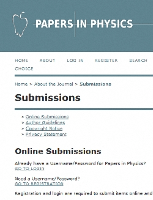
Papers in Physics
Scope & Guideline
Exploring innovative research in the heart of physics.
Introduction
Aims and Scopes
- Condensed Matter Physics:
Focus on the properties and behaviors of condensed phases of matter, including studies on magnetization, phase transitions, and complex material interactions. - Computational Physics:
Utilization of computational models and simulations to explore physical phenomena, including molecular dynamics, density functional theory, and statistical mechanics. - Atmospheric and Environmental Physics:
Research on atmospheric phenomena, including solar eclipses and their effects on environmental conditions, as well as the application of satellite technology for climate studies. - Granular Materials and Soft Matter:
Investigation of the behavior of granular materials, including their flow dynamics, tribological properties, and the challenges associated with their characterization. - Interdisciplinary Approaches:
Integration of techniques from various fields such as machine learning, fluid dynamics, and biophysics to address complex physical systems and challenges.
Trending and Emerging
- Machine Learning Applications in Physics:
The rise of machine learning techniques applied to physical systems, such as rainfall classification and material properties, showcases an emerging trend that combines data science with traditional physics. - Quantum and Relativistic Phenomena:
Research on topics like black holes and quantum corrections points to a growing interest in the intersection of quantum mechanics and general relativity, reflecting a trend towards addressing fundamental questions in physics. - Environmental Physics and Climate Studies:
The increasing focus on atmospheric studies, including solar eclipses and their effects, indicates a trend towards understanding environmental impacts and climate change through physical principles. - Soft Matter and Granular Systems:
Emerging investigations into the properties and behaviors of soft matter and granular materials reflect a growing interest in complex systems and their applications in various fields, including engineering and materials science.
Declining or Waning
- Classical Electrodynamics:
Fewer studies are being published that focus specifically on classical electrodynamics, suggesting a potential shift towards more contemporary topics like quantum electrodynamics or plasma physics. - Nanotechnology and Nanomaterials:
Although nanotechnology remains a significant area of interest, recent publications indicate a decline in studies specifically addressing nanomaterials, possibly due to saturation in this field. - Traditional Thermodynamics:
Research centered on classical thermodynamics appears to be waning, with a shift towards more complex systems and non-equilibrium thermodynamics being observed.
Similar Journals

Condensed Matter Physics
Unveiling Innovations in Condensed Matter PhysicsCondensed Matter Physics is a prestigious open-access journal published by the Institute of Condensed Matter Physics, National Academy of Sciences Ukraine. Since its inception in 1993, this journal has been dedicated to the dissemination of high-quality research in the field of condensed matter physics, providing a platform for scientists worldwide to share their latest findings. With an ISSN of 1607-324X and an E-ISSN of 2224-9079, it caters to a diverse audience, including researchers, professionals, and students. Although classified in the Q4 quartile for both condensed matter physics and miscellaneous physics and astronomy category, the journal plays a vital role in fostering communication among experts and advancing knowledge in this dynamic field. It is particularly vital for emerging researchers as it supports open access, ensuring that critical research is available to all, removing barriers to information. The journal's relevance remains steadfast, covering a wide array of topics and encouraging interdisciplinary approaches, and it is poised to inspire future scientific explorations until at least 2024.
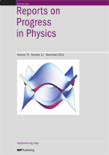
REPORTS ON PROGRESS IN PHYSICS
Advancing the frontiers of physics and astronomy.Reports on Progress in Physics is a prestigious scholarly journal published by IOP Publishing Ltd, based in the United Kingdom. With an illustrious history dating back to 1934, this journal serves as a vital resource for researchers and professionals in the fields of physics and astronomy, offering comprehensive overviews of significant developments in these disciplines. It holds a commendable Q1 classification in both Medicine (miscellaneous) and Physics and Astronomy (miscellaneous) categories, further underscored by its impressive ranking as 4th out of 243 in the general physics and astronomy sector, placing it in the top 2% percentile on Scopus. The journal is dedicated to disseminating high-quality, peer-reviewed articles that facilitate the understanding of complex physical phenomena and their applications. Although it does not currently offer open access options, its rigorous editorial standards ensure that only the most impactful research reaches its wide audience of academics, practitioners, and students, solidifying its role as a cornerstone of knowledge in the physical sciences.

INDIAN JOURNAL OF PHYSICS
Championing Cutting-Edge Research in PhysicsINDIAN JOURNAL OF PHYSICS, published by the Indian Association for Cultivation of Science, serves as a pivotal platform for researchers and scholars in the field of physics and astronomy. With its ISSN 0973-1458 and E-ISSN 0974-9845, this journal is committed to presenting innovative research and developments across diverse topics in physics, covering both theoretical and experimental studies. The journal has made its mark in the academic community, evidenced by its classification in the Q3 category within the Physics and Astronomy domain as of 2023, and ranks #100 out of 243 in the Scopus curated database, placing it in the 59th percentile. Spanning from 2005 to 2024, the INDIAN JOURNAL OF PHYSICS aims to foster knowledge exchange and stimulate discussions among physicists and scientific enthusiasts. Whether you are a researcher looking to publish your findings, a professional seeking updates in your field, or a student eager to explore varying aspects of physics, this journal is an invaluable resource contributing significantly to the understanding and advancement of physics in India and beyond.
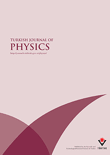
Turkish Journal of Physics
Connecting scholars with cutting-edge physics discoveries.Turkish Journal of Physics, established in 1994 and published by the Tubitak Scientific & Technological Research Council Turkey, is a prominent platform for the dissemination of innovative research in the field of physics and related areas. With an ISSN of 1300-0101 and an E-ISSN of 1303-6122, this journal has carved a niche in the academic community, evidenced by its ranking within the Q3 category in the 2023 evaluation of Physics and Astronomy. As it converges its published works toward the year 2024, researchers and scholars are encouraged to engage with its rich repertoire of studies that covers general physics and astronomy, currently holding a Scopus rank of #96 out of 243, placing it in the top 60th percentile. The Turkish Journal of Physics serves as a vital resource for advancing knowledge, fostering collaborative research, and providing insights into contemporary advancements in the discipline. While it operates under a subscription model, the quality and impact of its peer-reviewed articles make it an essential read for professionals and students alike, looking to stay informed on critical developments within the physics community.

DOKLADY PHYSICS
Advancing the Frontiers of Physics and Engineering.DOKLADY PHYSICS is a prominent academic journal dedicated to advancing knowledge in the fields of computational mechanics, mechanics of materials, and general physics and astronomy. Published by MAIK NAUKA/INTERPERIODICA/SPRINGER, this journal has established itself as a crucial resource for researchers and professionals keen on exploring the intricacies of physical phenomena and engineering applications. With its ISSN 1028-3358 and E-ISSN 1562-6903, DOKLADY PHYSICS has been contributing to scientific discourse since its inception in 1996 and continues to provide a platform for innovative research up to 2023. Despite its current Q3 ranking in several key categories, the journal maintains an inclusive approach, striving to influence both academic and practical aspects of its fields. While the journal may not be open access, it remains a vital publication for those interested in high-quality research, as reflected in its Scopus ranking positions across various engineering and physics categories.

Frontiers of Physics
Transforming Theoretical Insights into Practical AdvancementsFrontiers of Physics, published by Higher Education Press, is a premier open-access journal dedicated to fostering innovative research and excellence within the field of physics. With an ISSN of 2095-0462 and an E-ISSN of 2095-0470, this rapidly growing journal has established itself as a valuable platform for disseminating cutting-edge findings, covering a diverse range of topics from theoretical frameworks to experimental advancements. Notably, Frontiers of Physics has achieved an impressive Q1 ranking in the 2023 Scopus Quartiles for Physics and Astronomy, securing a competitive 5th out of 81 positions in its category, reflecting a high impact factor that underscores its importance to the scientific community. Since its inception in 2011 and continuing through 2024, the journal aims to bridge the gap between academia and industry, encouraging collaboration among researchers, professionals, and students alike. Its commitment to open access ensures that high-quality research is readily accessible, thereby promoting knowledge sharing and advancement in the global physics community. Explore the potential of your research in Frontiers of Physics, where the future of physics flourishes.
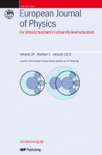
EUROPEAN JOURNAL OF PHYSICS
Fostering Dialogue in the World of PhysicsEuropean Journal of Physics, published by IOP Publishing Ltd, is a premier international journal serving the diverse field of physics and astronomy. With a commitment to advancing scientific knowledge since its inception in 1980, the journal provides a platform for original research articles, reviews, and topical discussions in various domains, including theoretical and experimental physics. Operating out of the United Kingdom, the journal has achieved a commendable Q2 ranking in the Physics and Astronomy (miscellaneous) category for 2023, reflecting its robust influence in the academic community, alongside a notable Scopus Rank that underscores its relevance in both the Social Sciences and General Physics and Astronomy fields. Although it does not currently offer open access, the journal's traditional publication model ensures rigorous peer review, maintaining high scholarly standards that are imperative for researchers, professionals, and students striving to stay ahead in their respective fields. Don't miss the opportunity to engage with cutting-edge research and contribute to the ongoing dialogue in physics by accessing this vital resource.
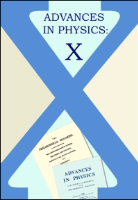
Advances in Physics-X
Exploring the Boundaries of Physics and AstronomyAdvances in Physics-X is a premier open-access journal published by Taylor & Francis Ltd, dedicated to advancing the frontiers of knowledge in the field of Physics and Astronomy. Since its inception in 2016, the journal has established itself as a vital platform for researchers and professionals, showcasing innovative research and cutting-edge theories that influence a broad array of sub-disciplines within physics. With an impressive impact factor and ranked in the 94th percentile among its peers, it resides in the Q1 category for Physics and Astronomy (miscellaneous), indicating its significant contributions to the academic community. Located in the United Kingdom, the journal encourages open access to foster wider dissemination and visibility of scholarly works, aligning with contemporary academic trends that prioritize global knowledge sharing. The ongoing commitment to publishing high-quality research ensures that Advances in Physics-X remains an essential resource for students, industry experts, and academics alike, helping to shape the future of physics research through collaboration and innovation.
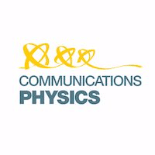
Communications Physics
Advancing the frontiers of Physics and Astronomy.Communications Physics is a premier open access journal published by Nature Portfolio, dedicated to disseminating high-quality research in the field of Physics and Astronomy. Since its inception in 2018, the journal has rapidly established itself as a vital platform for innovative scientific communication, boasting an impressive Impact Factor and achieving Q1 status in the 2023 category of Physics and Astronomy (miscellaneous). With a Scopus rank of #31 out of 243, placing it within the 87th percentile, Communications Physics attracts a global audience of researchers, professionals, and students eager to engage with cutting-edge findings. The journal supports open access, ensuring that research is freely available to the public, which enhances its visibility and encourages broader discussions within the scientific community. Located in Berlin, Germany, Communications Physics aims to bridge the gap between various disciplines within physics, fostering interdisciplinary collaboration and inspiring future research endeavors.
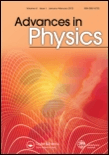
ADVANCES IN PHYSICS
Pioneering the Future of Condensed Matter Physics.ADVANCES IN PHYSICS, published by TAYLOR & FRANCIS LTD, is a prestigious journal that has been at the forefront of condensed matter physics since its inception in 1952. With an impressive impact factor, the journal holds a prominent place in the academic community, classified as Q1 in the 2023 category for Condensed Matter Physics, and it ranks first among 434 journals in this field, demonstrating its value and influence. This journal provides a platform for cutting-edge research, encompassing theoretical, computational, and experimental studies that push the boundaries of knowledge in physics. Its commitment to high-quality publications makes it essential reading for researchers, professionals, and students alike. Although it does not offer open access, ADVANCES IN PHYSICS remains a critical resource for those aiming to stay updated with significant developments in condensed matter physics, fostering innovation and collaboration across disciplines.